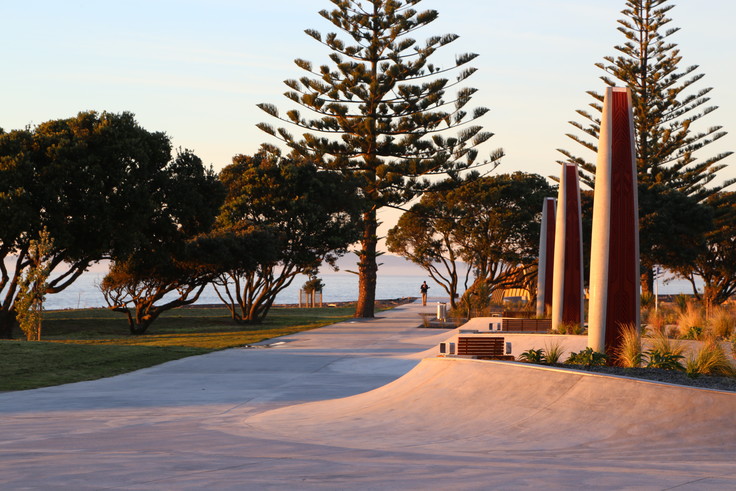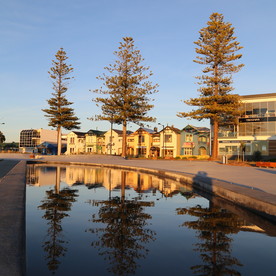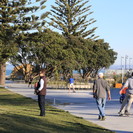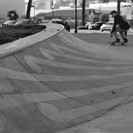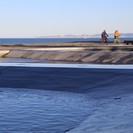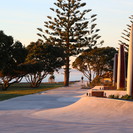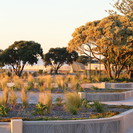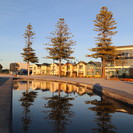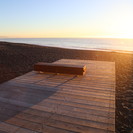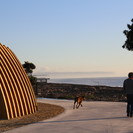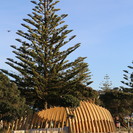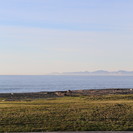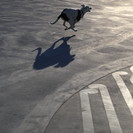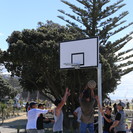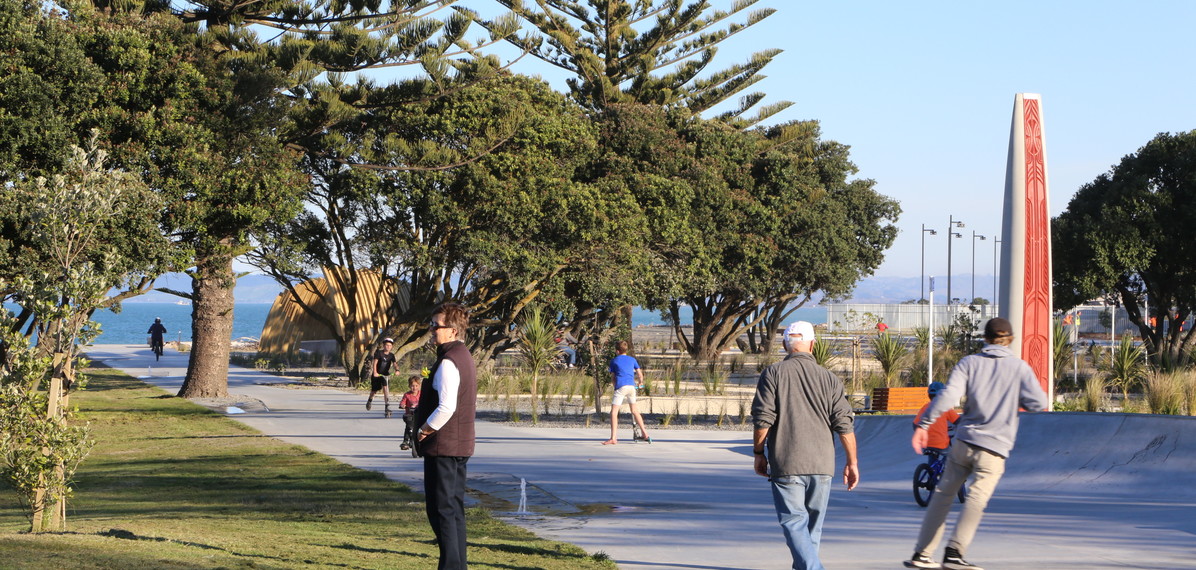
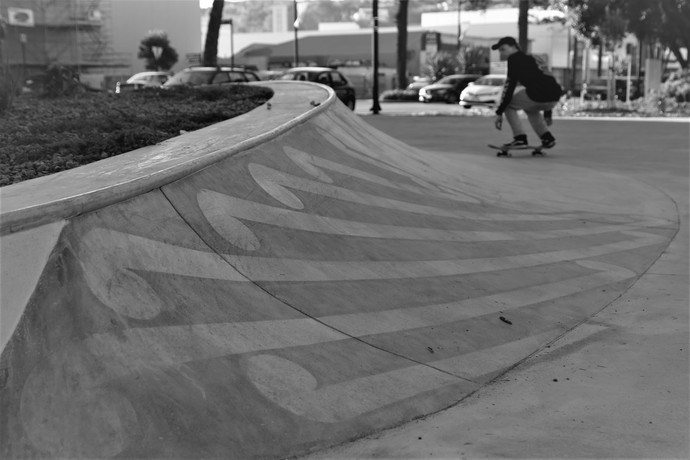
The redevelopment of this key waterfront site on Marine Parade in Napier has given new life to the area by connecting the city to its coastline and replacing a waterfront carpark with a significant public space that reflects the natural and cultural landscape of the bay.
With the adjacent former Marine Land site - which has been redeveloped into a multi-purpose skate, event and entertainment facility - this new coastal public space is injecting activity and energy onto the city’s coastal edge and providing coastal pathway users a reason to stop and engage. The park includes a mix of complimentary spaces, including structures and vegetation that offer shelter and coastal outlooks; gardens and undulating lawn spaces engaging with the sea and city; a multi-sports court; and a series of reflective and interactive water features that are threaded through the site provide something for all parts of the community and visitors alike.
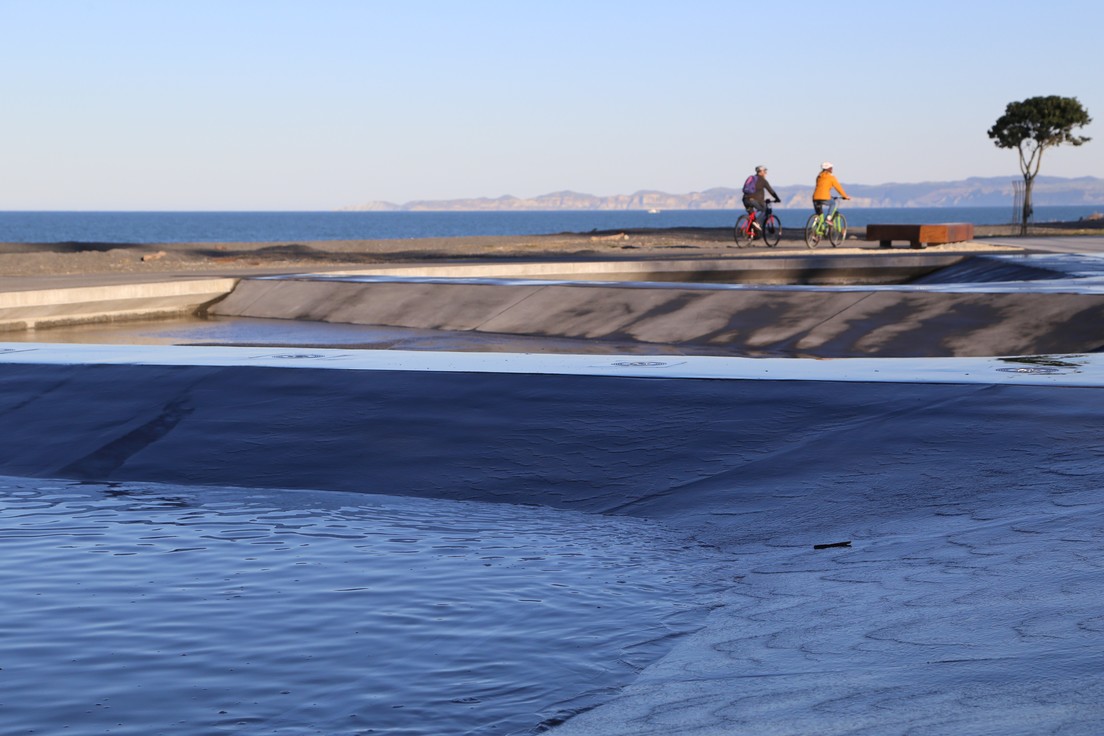
Boffa Miskell led the landscape design, working with Paris Magdalinos Architects and Napier City Council. A key part of the project was developing the landscape and cultural narrative of the site with artist Jacob Scott, who also created the integrated and stand-alone artworks.
The design of the park references the former gravel spit on which the site sits: a threshold between the Pacific Ocean and the former lagoon upon which Napier was eventually developed. The design looks east to the horizon and frames the views and landscape connections to Cape Kidnappers/Mataupo Maui and Mahia Peninsula.
This is Napier’s place to talk to the Pacific, and to the global community. Local connections to pioneers such as sea-faring tupuna, and to Maui himself, are integral to the mana, the narrative and the structure of the project.
Maui was the innovator, the maverick, the challenger of the status quo. He was the initiator of a new world cycle, catching the sun and slowing it down; and he was this nation’s fisherman, responsible for pulling up the North Island.
With this bay being the fin of the stingray caught by Maui (Te Ika-a-Maui), and with views to Cape Kidnappers (Maui’s hook), this narrative is a pivotal informer of the design.
The site itself is carved to create routes and spaces along the transition from the civic landscape of the Sunken Gardens to the more open coastline - a journey that uses water as its connecting element.
Sculpting of the site provides a physical reflection of:
- the constant sculpting of the land’s edge through coastal processes
- the flow of the historic Tutaekuri River behind
- the riding of the wave
- the motion of the stingray’s fin/pakau
- the chasing of the chisel
The planting character reflects the rugged and exposed coastal environment to the East, transitioning to the shelter of the estuarine environment to the West. Large seating elements are dropped on the site, sitting comfortably adjacent to the driftwood which comes and goes from the site in response to high tides and storm surges.
Opened in late August, the park has already become a go-to place for locals and visitors alike, and with summer on the way we look forward to seeing the community spending more time in this place, engaging with their coastline and enjoying all the site has to offer.
Landscape design lead - Michael Hawes + Nik Kneale
Project manager - Michael Hawes
Project team - Nik Kneale, Michael Hawes, Dylan Robinson, Yoko Tanaka, Daniel Whatnall, Heather Wilkins, Kieran Dove
Worked with - Paris Magdalinos Architects, Jacob Scott – Artist and Architect
Photos - Nik Kneale, Boffa Miskell
It is with great sadness that we acknowledge the recent passing of Nic Magdalinos – Director of PMA Architects; our partners on this project.
Our thoughts are with the PMA team, friends and whanau at this time.
E te rangatira, haere, moe mai, okioki moe rā
